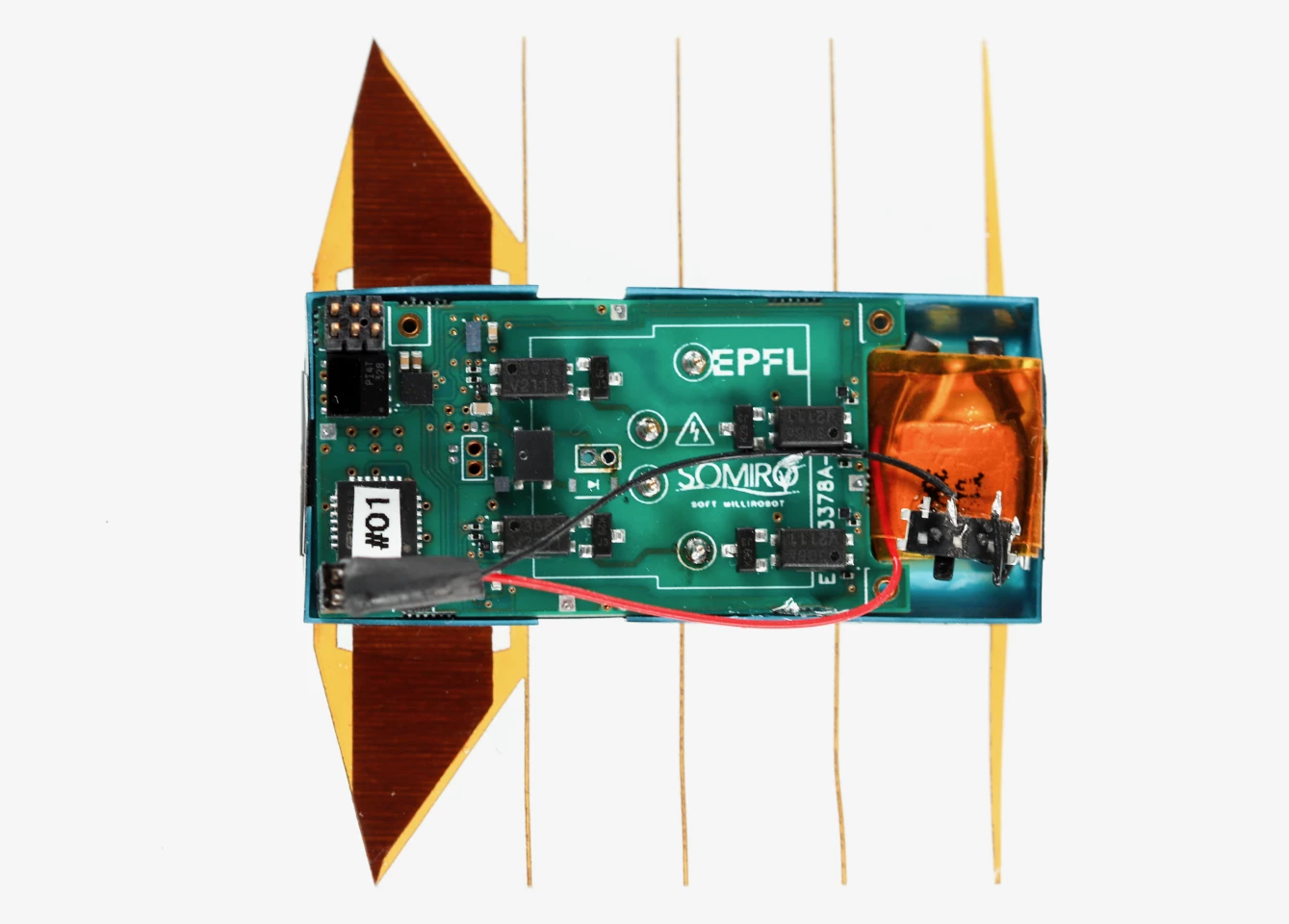If a robot is being used to gather data in sensitive aquatic environments, it shouldn't have a whirring propeller that could harm wildlife or get caught in weeds. A new bot addresses that issue by utilizing a swimming mechanism inspired by flatworms.
Although marine flatworms generally stay on the seabed, they can swim through open water by undulating their thin, flat bodies. A series of traveling waves start at the front of the worm's body and roll to the back, propelling it forward.
Scientists at Switzerland's EPFL university have now copied that action in a tiny untethered robot that can move in any direction across the water's surface. The battery-powered device weighs just 6 grams and measures 45 mm long by 55 mm wide.
Its propulsion system incorporates two soft, flexible, 6-mm-thick rubber membranes which serve as pectoral fins. Each of those fins is connected to its own electrohydraulic actuator, which generates waves that travel through the membrane. An onboard electronic control system delivers up to 500 volts to each of those actuators at a power of just 500 milliwatts.
Utilizing this setup, the robot is capable of scooting across the surface at speeds of up to 12 cm (4.7 in) per second. It actually improves upon the flatworm's mechanism, as its fins undulate 10 times faster than the worm's body. And what's more, along with being able to travel forward and turn to either side, the robot can also move sideways or backwards if an additional two actuators are installed. Plus it's claimed to not produce any motor noise.

The current prototype has light sensors that serve as rudimentary eyes, allowing it to autonomously follow moving light sources. It can also push floating objects weighing more than 16 times its own body weight.
Possible uses for more advanced versions of the robot could include environmental monitoring, pollution tracking, and precision agricultural tasks in settings such as flooded rice paddies.
"We aim to extend operating times and enhance autonomy," says former EPFL researcher Florian Hartmann, who is now a research group leader at Germany's Max Planck Institute for Intelligent Systems. "The fundamental insights gained from this project will not only advance the science of bioinspired robotics but also lay the foundation for practical, lifelike robotic systems that harmonize with nature."
A paper on the study was recently published in the journal Science Robotics. You can see the robot in action, in the video below.
And for another take on the whole bioinspired surface-swimming robot idea, check out Washington State University's WaterStrider robot.
Source: EPFL





